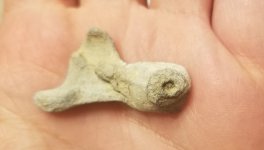henrysmom
Newbie
- Sep 24, 2009
- 4
- 0
A neighbor of mine, who may well be considered 'out there' has told me a story.
He said in East Texas there have finds of large lead balls, just kind of out in fields. Some were hollowed out and contained gold coins. Some were just lead. He said no one knows who buried them. He didn't have a count of how many have been found or over what time period or even how far apart from one other they were.
Has anyone else ever heard of such a thing?
He said in East Texas there have finds of large lead balls, just kind of out in fields. Some were hollowed out and contained gold coins. Some were just lead. He said no one knows who buried them. He didn't have a count of how many have been found or over what time period or even how far apart from one other they were.
Has anyone else ever heard of such a thing?




